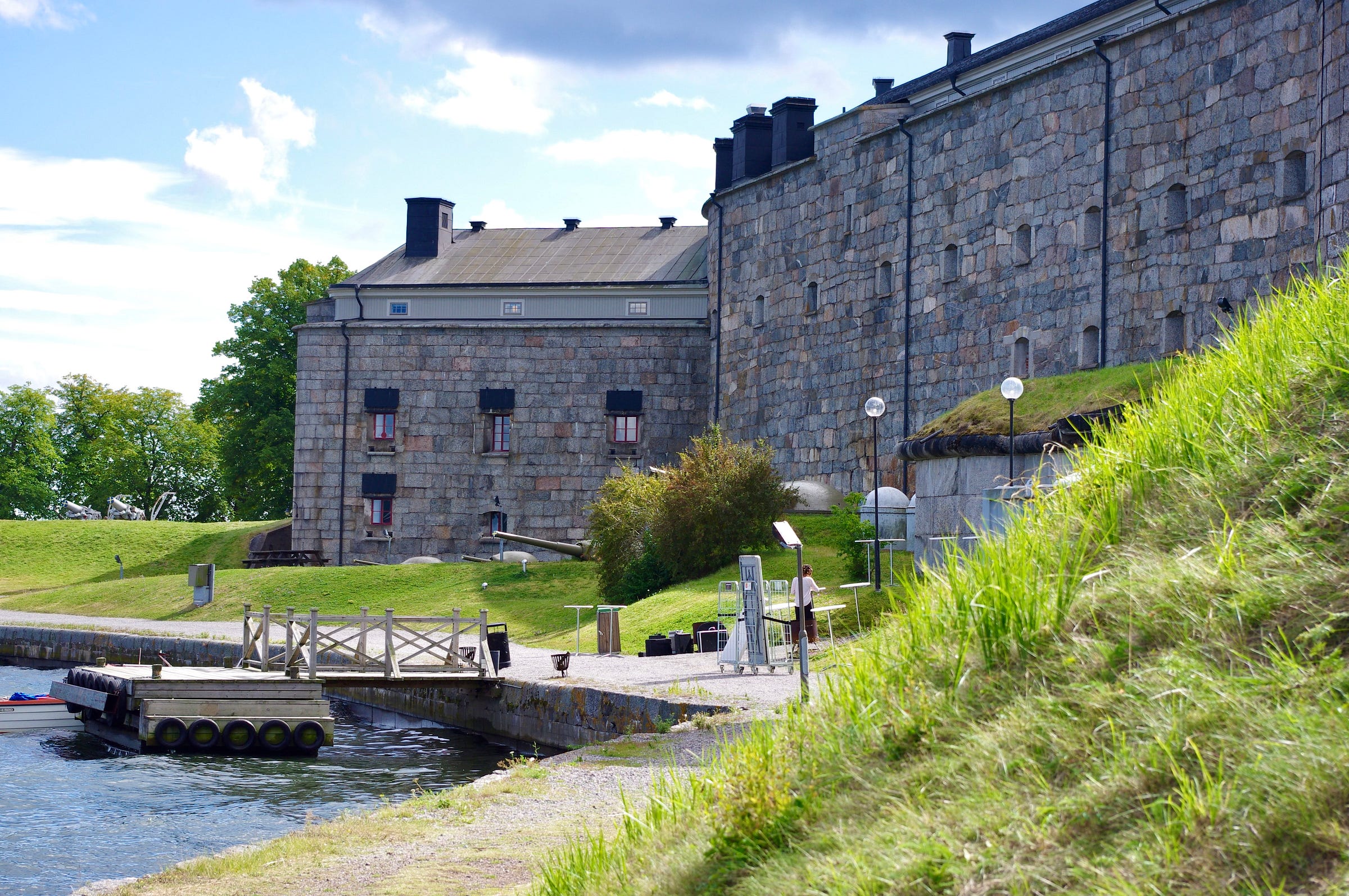Cause of death – explosion or the fate of a soldier, Carl Victor Forsman
Born on 12th March 1865 in Övertjärn, died on August 11, 1887 at Vaxholm at the age of 22.
Our guest writer, joins us as part of our first cohort in the Projectkin Members’ Corner. Monthly posts from members celebrate their contributions to family history storytelling — in all its forms. Posts may be written or recorded (audio or video) will be shared for free each month. Explore the entire Members’ Corner here.
The Explosion at Vaxholm Fortress
“A serious accident took place last Thursday at 4.45 a.m. at Vaxholm Fortress, in which no fewer than nineteen people, belonging to the constable school located there, perished in an explosion that occurred at that time.”
So, it was written in Värnersborgs Tidning 1887 in August. This explosion is still today one of the worst accidents in the Swedish army. It is also an accident that took the life of a young man, my 2x great grandmother's brother, who was only 22 years old. He had then belonged to the Royal Svea Artillery Regiment for a little over a year. How then had this young man born at a soldier’s cottage in Övertjärn outside Riddarhyttan ended up in Vaxholm on this fateful day?
His name was Carl Victor and he was born 12th March 1865. His parents were the soldier (indelt) Carl Eric Forsman and his wife Lovisa Forsman.1 Forsman is the name used by soldier No 66 in Berg’s Company in Västmanland’s Regiment and their cottage, croft for you Americans, was called Forsmantorpet and located in the mining community of Riddarhyttan in Skinnskatteberg’s parish.

However, in Carl Victor’s case not only his father but also both his grandfathers and two of his brothers were indelta (part-time) soldiers in an area where most people worked with mining or other occupations linked to the mining.
What did this mean for Carl Victor and his life and what took him to Vaxholm?
As a boy he would have helped farming at home and he might even have worked in the mine or ironwork. Either way this would not have been recorded in the house examinations for two reasons, one children and women were never recorded as workers and two this is about the time when society starts frowning on child work especially in dangerous environments.
1881 he moved to a nearby tenant farm and worked as a farmhand for a year. Then he spent a year back home with his parents and 1883 he moved to the parish Kungs-Barkarö. He was still a farmhand and worked for Major Carl Henrik Mannerstråle at Charlottenborg. When Mannerstråle gets promoted and posted to Stockholm in 1885, Carl Victor again moves back home to his parents. After a few months there is a note in the house examination indicating his plan to move to Stockholm. On May 19th 1886 he left Övertjärn for Vaxholm and the Garrison at the fortress. He had been accepted into the 2nd Company of Royal Svea Artillery Regiment as soldier No 39. Vaxholm is a town north of Stockholm in the Archipelago. In the Garrison parish he is entered as the soldier son Carl Victor Forsman and he belongs to the constable school. A constable in the Artillery was a corporal.
What made him choose the regular Army instead of becoming a part-time soldier (indelt) we may never know. There were no stories told about this son for the younger generations, his grand-niece never mentioned him and neither did her mother who was the niece of Carl Victor. A guess could be his time as a farmhand at Charlottenborg. He spent two years working for the Major and may have been inspired or convinced by him to enlist.
On August 11, 1887, the Gunners in the constable school are preparing for an exercise the next day at Trälhavet. They were preparing loose cartridges. It was raining on this day so to keep the gunpowder dry a makeshift shed had been built at the Eastern lodging building.
What really happened has never been determined, but at four o'clock in the afternoon, the foreman, Lieutenant Hugo Kihlstedt, leaves to go to the switchboard to take a call. Before he got the call, he had decided that they would finish work for the day. When he finishes his conversation, he goes straight to the officers' mess instead of going back to the Shed. He arrives there about 15 minutes before the explosion. Gunner Blomkvist had been sent on an errand and Gunner Olsson left just before the explosion to go to the restroom. These were the only ones of the constable school to survive the explosion.
The explosion was powerful and the remaining men were thrown in all directions, windows were smashed, fire broke out and the clock in the castle yard stopped. Body parts were even found on Rindö, the next island over. Despite this devastation, it could have been worse. The shed had previously also contained live ammunition which had been moved before the explosion. Only one of the dead could be fully identified so the others were buried together in one grave at the New Cemetery in Vaxholm.
After the explosion, an investigation was started into what happened and whether anyone could be blamed. I have read through newspaper articles from this time, read summaries of what happened and also visited Vaxholm fortress to try to get more information about this accident. Unfortunately, it seems to be almost forgotten or, as in the family, something that is not talked about.
The investigation did not lead to any clarity as to what actually happened and the reason for it. There was a lot of information about things that would have happened and who did what but, in the end, the only safe assumption can probably be that there seem to have been a lot of carelessness in the handling of the ammunition. This, combined with the fact that the Lieutenant who was the responsible leader left and did not return, may well have contributed to the explosion. As a result of the court-martial's investigation, the only penalty was that Lieutenant Kihlstedt was sentenced to 30 days in prison for misconduct (he did not return to the shed after the phone call). No one could or for that matter can say what would have happened if he went back to the shed. Had he been able to prevent an accident or had he also become a victim?
Today there is a plaque in the memorial grove at Vaxholm's castle with the names of the 19 Gunners who died that day. In the cemetery in Vaxholm, where 18 of them are buried, there is a memorial stone that also has their names engraved. Carl Victor died only 22 years old.
I wrote this piece to give Carl Victor a story and place in my family history which he deserves.
Do you think you might be interested in joining us here in the Members’ Corner with a piece of your own? We’d love to share your work. Learn more:
In case you wondered, Carl Victor took the soldier name his father had which was Forsman. To complicate it his mother was also Forsman. She, like all her siblings, took their father's soldier name Forsman. Carl Victor's parents thus were both Forsman without being related, his maternal grandfather was Forsman and his paternal grandfather was Wetterskog also a soldier's name.











There's so much amazing detail here! I have Danish ancestors and this is inspiring me to try to find out more about their life before emigrating. Thanks for sharing this, though it's so sad.